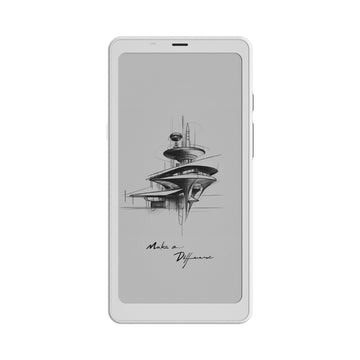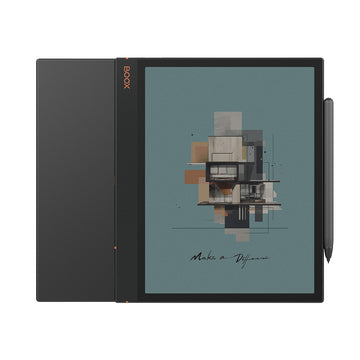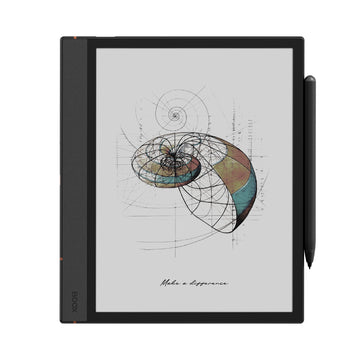From Clutter to Clarity: Master Color-Coded Notes with BOOX Color ePaper Tablets
Do you ever feel buried under a sea of cluttered notes, struggling to find an important detail? Or perhaps you've tried highlighting key points, only to end up with a rainbow mess that's more confusing than helpful? Note-taking is an essential skill, and using colors in notes is like giving your brain a roadmap. Whether you're jotting down lecture notes, prepping for a work project, or just crafting a daily to-do list, color coding is a simple yet powerful technique to turn your notes from chaos to clarity.
BOOX color ePaper tablets, such as the Note Air4 C with an eye-friendly E Ink display, blend the natural paper feel with the versatility of digital writing tools, making color-coded note-taking not only effortless but also enjoyable. Let's delve into how we can harness the power of color coding with a BOOX tablet.
The Benefits of Color-Coded Notes
Writing notes in color isn't just about making them look pretty, it enhances memory retention and comprehension by acting as visual cues. Assigning specific colors to different topics or themes helps your brain better process and recall information. It also improves organization and makes it easier to navigate and quickly locate details. Adding colors to your notes boosts concentration too. The vibrant hues keep you engaged, while colored highlights focus your attention on the most crucial information.
How to Color-Code Notes with BOOX Color ePaper
#1 - Plan and Choose Your Color Palette
Start by selecting a set of colors and associating each with a particular subject. BOOX tablets allow you to take notes with 16 color options and 5 brush types: Pencil, Pen, Brush Pen, Ballpoint Pen, and Marker. Opt for contrasting colors that are distinct from each other and that can make text stand out, and decide how you want to emphasize the content.
For example, you can choose colors like red, yellow, blue, and green, and then use the Marker for bold highlights, the brush pen for stylish headers, or the ballpoint pen for neat underlines. Remember to save your preferred combinations to the top toolbar for quick access.

#2 - Develop a Color-Coding Key
Before taking notes, establish a color coding notes key to define what each color represents. A clear key sets the foundation and lets you immediately interpret the meaning of highlighted sections. Write it down at the beginning of each notebook, or create a separate note for it and use the Link to Notes feature to attach the key to all your notebooks. This way, you’ll always have it handy. Try to adopt the same scheme across all notes to reinforce memorization.
Here's an example and a simple guide:
- Red: Urgent tasks or deadlines.
- Yellow: Important points.
- Blue: Key definitions or concepts.
- Green: Names, locations, events, or statistics.
- Purple: Examples, case studies, or point of view.
#3 - Utilize the Right Tools
BOOX ePaper tablets provide a diverse range of digital note-taking tools. To make the most of BOOX tablets for color coding, consider these tools:
- Create Shapes: Use colored squares, circles, or other geometric shapes to group related ideas, and customize borders and fills with distinct colors to differentiate content. For example, draw a red rectangle around urgent deadlines or a green oval around events.
- Leverage Templates: The BOOX Notes app comes with various built-in templates to simplify your note-taking process and make your notes more structured. You can also upload your own custom templates with pre-colored sections that match your color coding key. For instance, you can create a study session template where “task lists” are in red and “notes/reminders” appear in blue.
- Effortless Editing with Lasso: The lasso tool enables you to quickly select and edit notes. Use it to flexibly change the color of the ink, resize, and move objects to organize your thoughts seamlessly.

#4 - Be Consistent, But Adjust When Needed
Consistency is vital for effective color coding. Stick to your color scheme and use the same colors throughout notes, not just for a particular one. This will avoid mixing up information and help build long-term memory. However, don't hesitate to tweak your system if certain colors aren't working or if better methods are discovered—if orange outshines yellow for important points, switch it up. The BOOX tablet's digital functionality allows you to adjust the colors of handwritten notes easily.
Basic Principles of Color-Coding
- Take Notes First, Color-Code Later: Focus on only gathering information during lectures or meetings. Take your main notes initially, then add colors to highlight key points afterward.
- Limit Your Color Palette: Stick to 3-5 primary colors. Too many may complicate your notes and overwhelm you, making it harder to identify what each color means.
- Match Colors with Emotional Cues: Assign colors based on how they feel (e.g., read for urgency, blue for insights, yellow for warning signs.) This taps into your instincts, making the notes more intuitive.
- Avoid Overdoing: If you highlight everything, you've highlighted nothing. So highlight only the most critical things to maintain clarity and prevent visual overload.

Conclusion
Color coding is not merely for aesthetics; it's to build a personalized cognitive system that works with how your brain consumes and handles information. By implementing these simple strategies and making use of the powerful note-taking tools with a BOOX color ePaper tablet, you'll find yourself spending less time retrieving information between notes and more time being productive.













